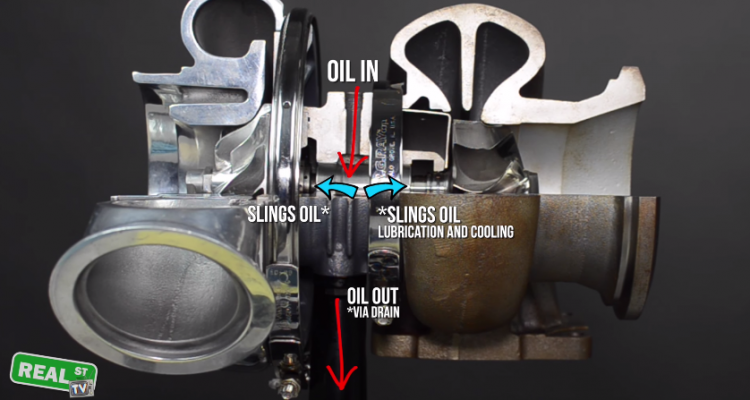Ask most internet mechanics and online amateurs and the first response to Smoking turbo tends to be “blown turbo seals”.
But before panicking, let’s review something we often overlook when discussing turbochargers: Lubrication.
Holding the shaft that connects compressor with turbine, there are journal bearings, or in some cases, ball bearings. In any case, these travel surfaces must be clad with a film of oil, lubricant enters the turbo from above, goes through the bearings, is contained by the seals, and exits through the bottom.
If your car has a smoking turbo, it’s possible that one of the following two scenarios are taking place.
One: your turbo is mounted in a way that restricts or slows down oil delivery; this is common among rear mounted turbos, or low mounted ones.
Two: your turbo has a restriction on the oil exit, or is mounted the wrong way up, which means oil is not being driven out of the turbocharger; the latter case is often dealt with by fitting a scavenging pump, that maintains constant flow of oil.
Lubrication is key when dealing with turbos, the video below provides a more detailed explanation of Smoking turbo problems.

